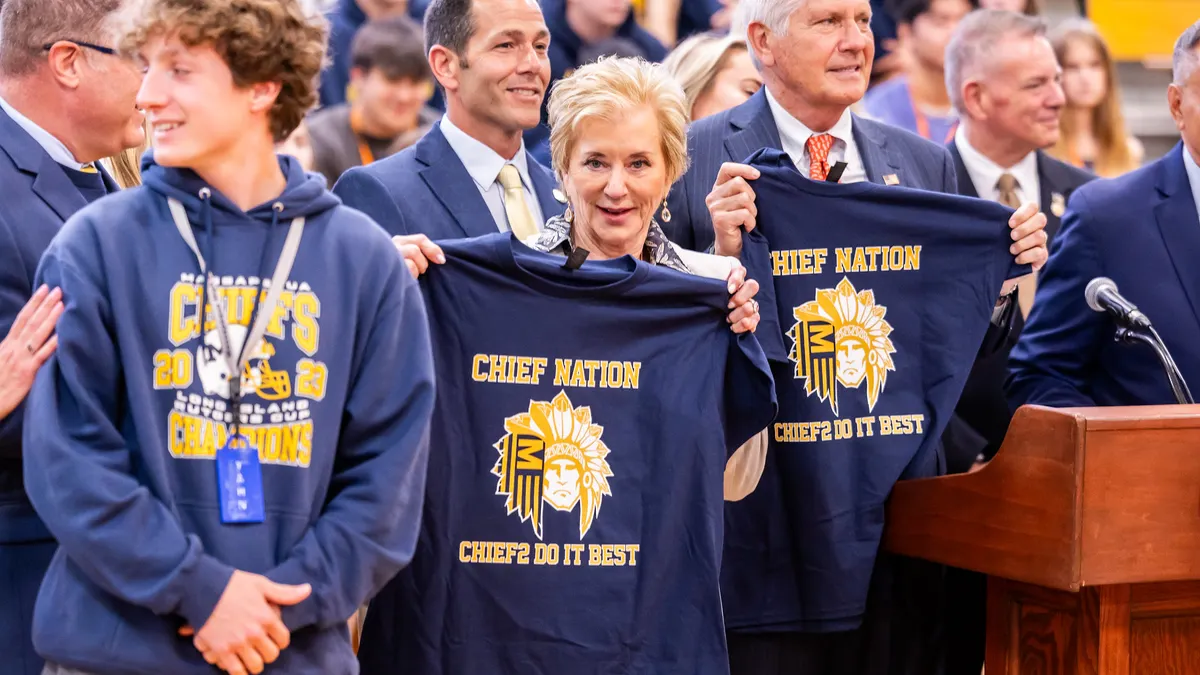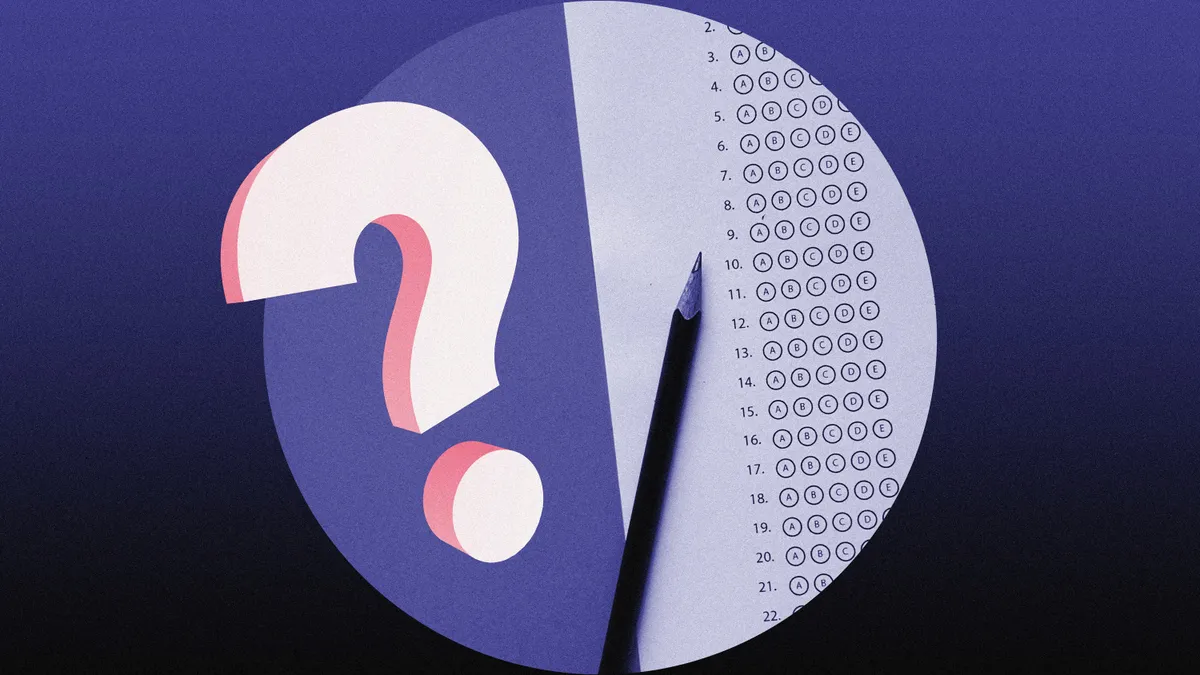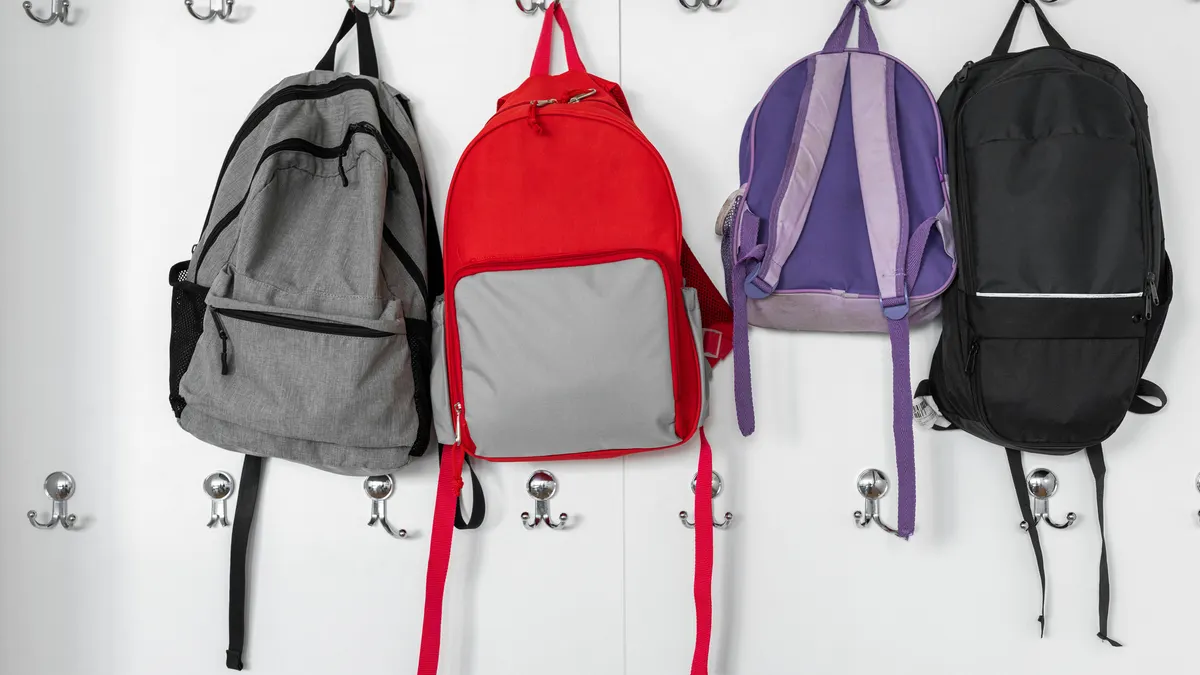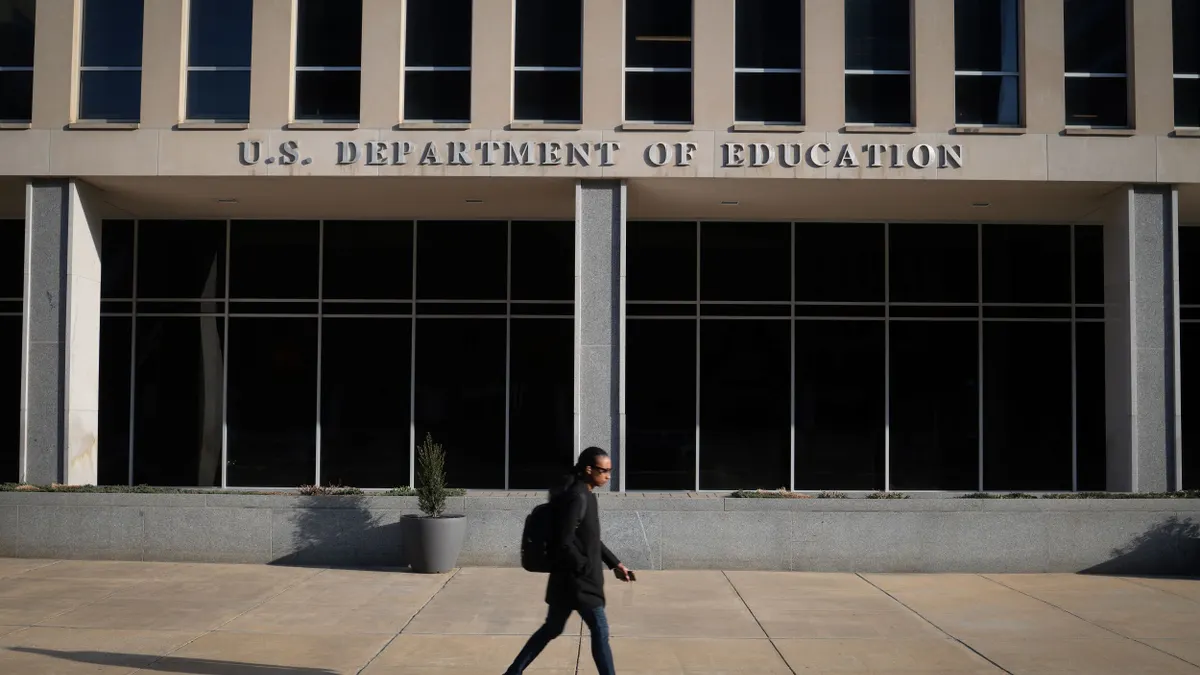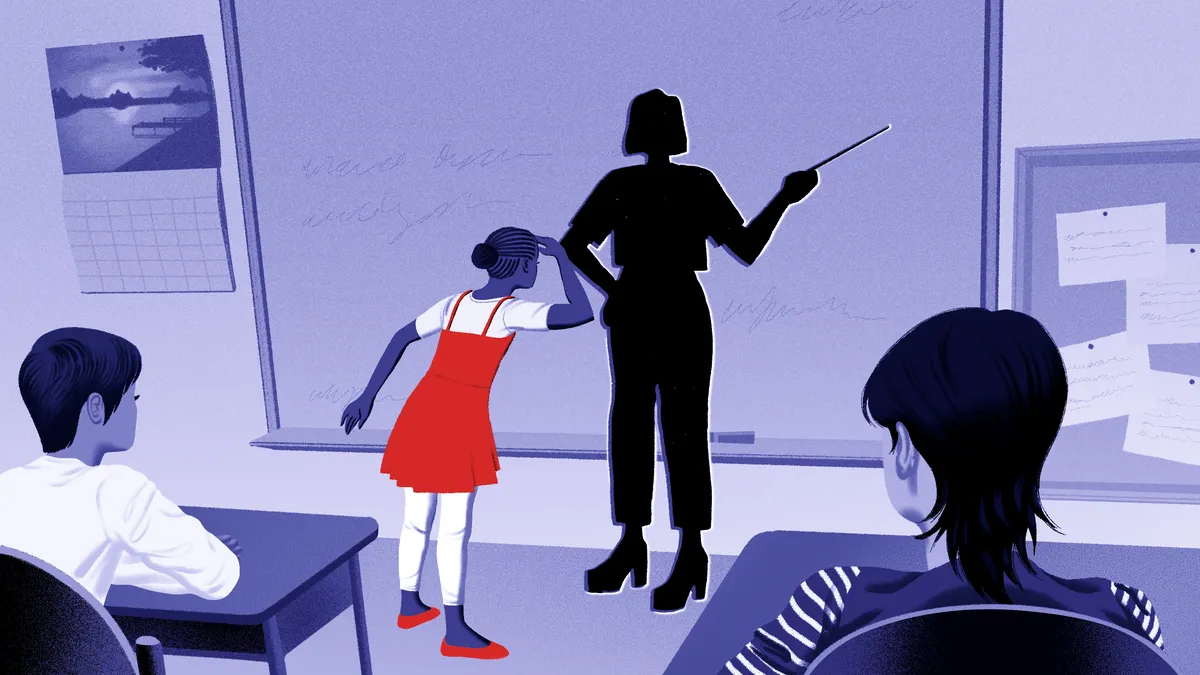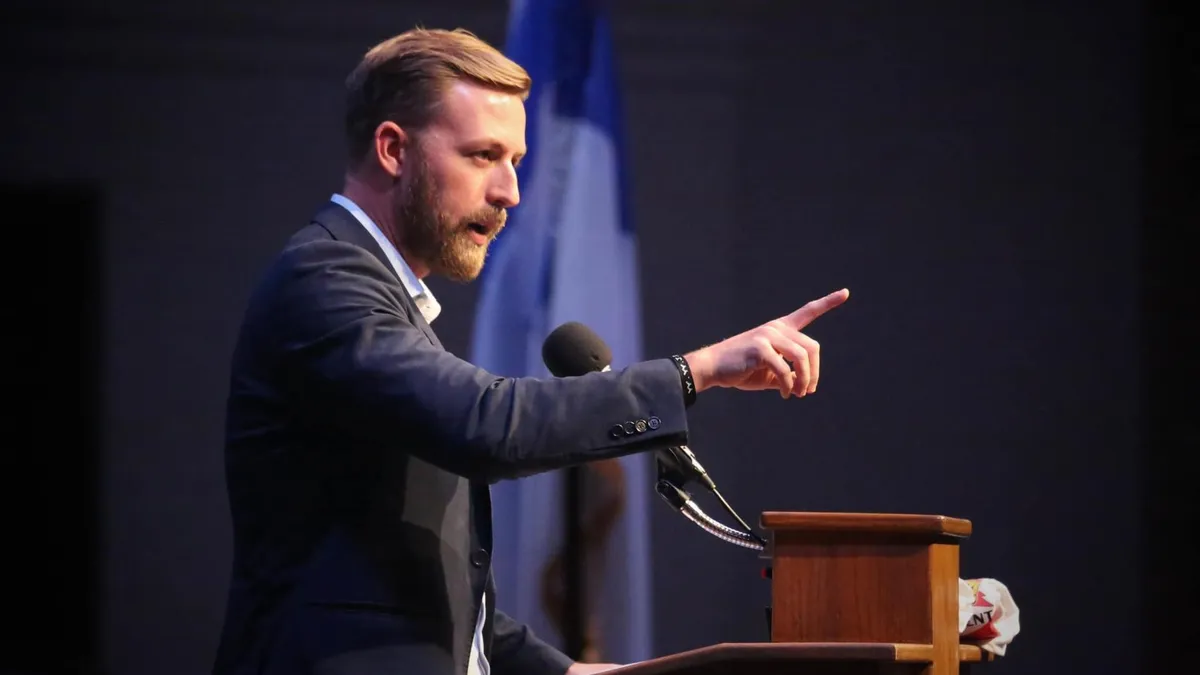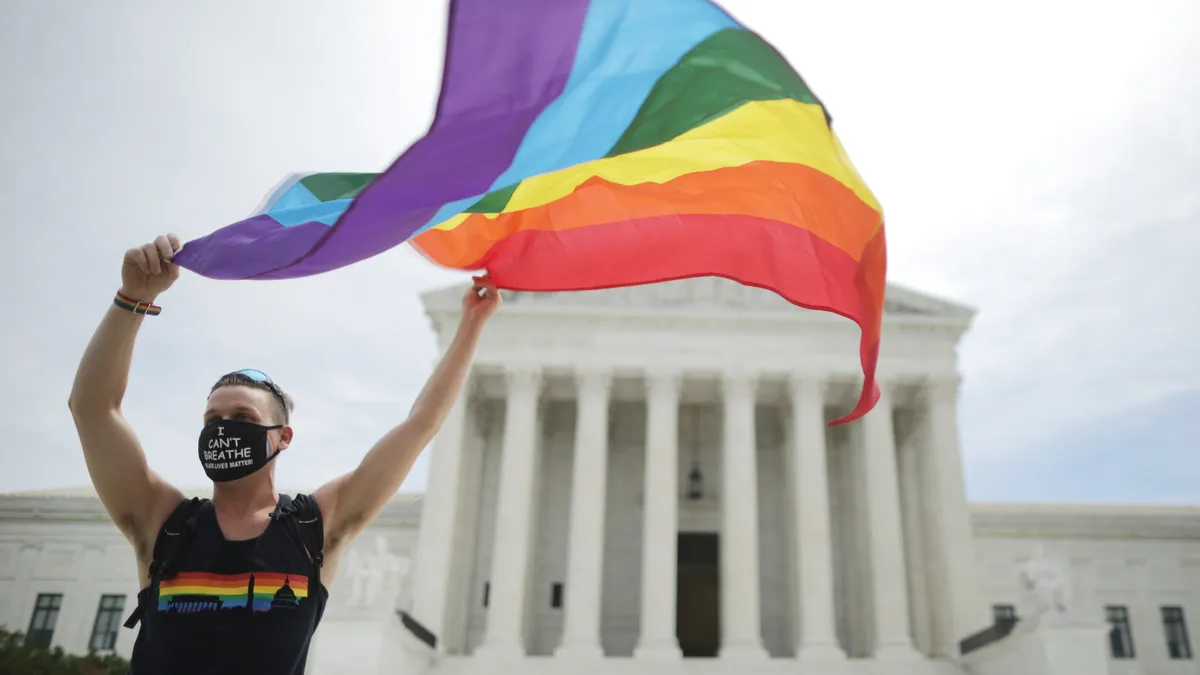After a three-year and sometimes arduous process, in the end it only took a handful of minutes for Minnesota's Deer River Schools to get a stamp of approval for its mascot from the local Native American tribe.
The tribal council for Leech Lake Band of Ojibwe — the tribe with the largest American Indian student population attending Deer River Schools — green-lit the district's spear and feather design on July 16. That approval came under a 2025 amendment to a Minnesota law allowing school districts to keep or adopt American Indian imagery or names only if they receive formal consent from a tribal nation.
“This decision reflects the value of collaboration and honors the intent of the law, which rightly recognizes tribal sovereignty and the importance of local relationships,” said Faron Jackson Sr., chairman of the Leech Lake Band of Ojibwe, in a July 18 statement.
That same day, the council also approved a Native American-themed mascot for Grand Rapids Area Schools, Deer River's neighboring district. “We appreciate that both districts have engaged with us in good faith and shown a real commitment to supporting American Indian students and honoring our culture,” Jackson said.
The journey to that end was far from seamless, however.
Deer River Schools' previous mascot featured the male image of a Native American. But in 2023 Minnesota enacted a law requiring districts to get approval from all 11 federally recognized tribes in the state when using a Native American mascot.
“It happened fast, and it was really confusing to those of us that were impacted,” said Deer River Schools Superintendent Pat Rendle. “That was a real difficult process.”
Then this year, state legislators amended the law to simplify the process. Now, districts only have to get approval from their American Indian Parent Advisory Committee and their primary tribal partner to use a Native American mascot.
“As a building leader, I just went day by day, step by step, did what was required, and just was patient,” said Rendle. “In the end, it turned out exactly the way it should have to begin with — but it took about three years to get there — and that was to let us locally determine these things.”
An old — and new — controversy
Minnesota's shifting approach on when it's OK to use Native American mascots in K-12 public schools and the final outcome for Deer River Schools exemplifies a broader debate brewing nationwide: When, if ever, is it racially discriminatory to use or to ban Native American mascots? Who gets to decide what a mascot should be? And who should pave the road to approval — the local, state or federal government or other entity?
In recent months, the U.S. Department of Education under the Trump administration — and President Donald Trump himself — have resurfaced this debate.
While working to peel back diversity, equity and inclusion measures meant to make schools more culturally reflective for students of all backgrounds, the Trump administration has on the other hand pushed to revive Native American mascots, saying bans on them constitute discrimination based on race and national origin.
In April, the Education Department's Office for Civil Rights launched an investigation into the New York Department of Education after a local disagreement between the state and the Massapequa School District over its "Chiefs" mascot. The district fought in court to preserve its mascot after the state in 2023 banned Native American mascots with certain exceptions.
As in Minnesota, school districts are required to get consent from their local tribe to use Native American imagery. This is per a New York Department of Education policy which was designed to prevent insensitive representations of Native American culture.
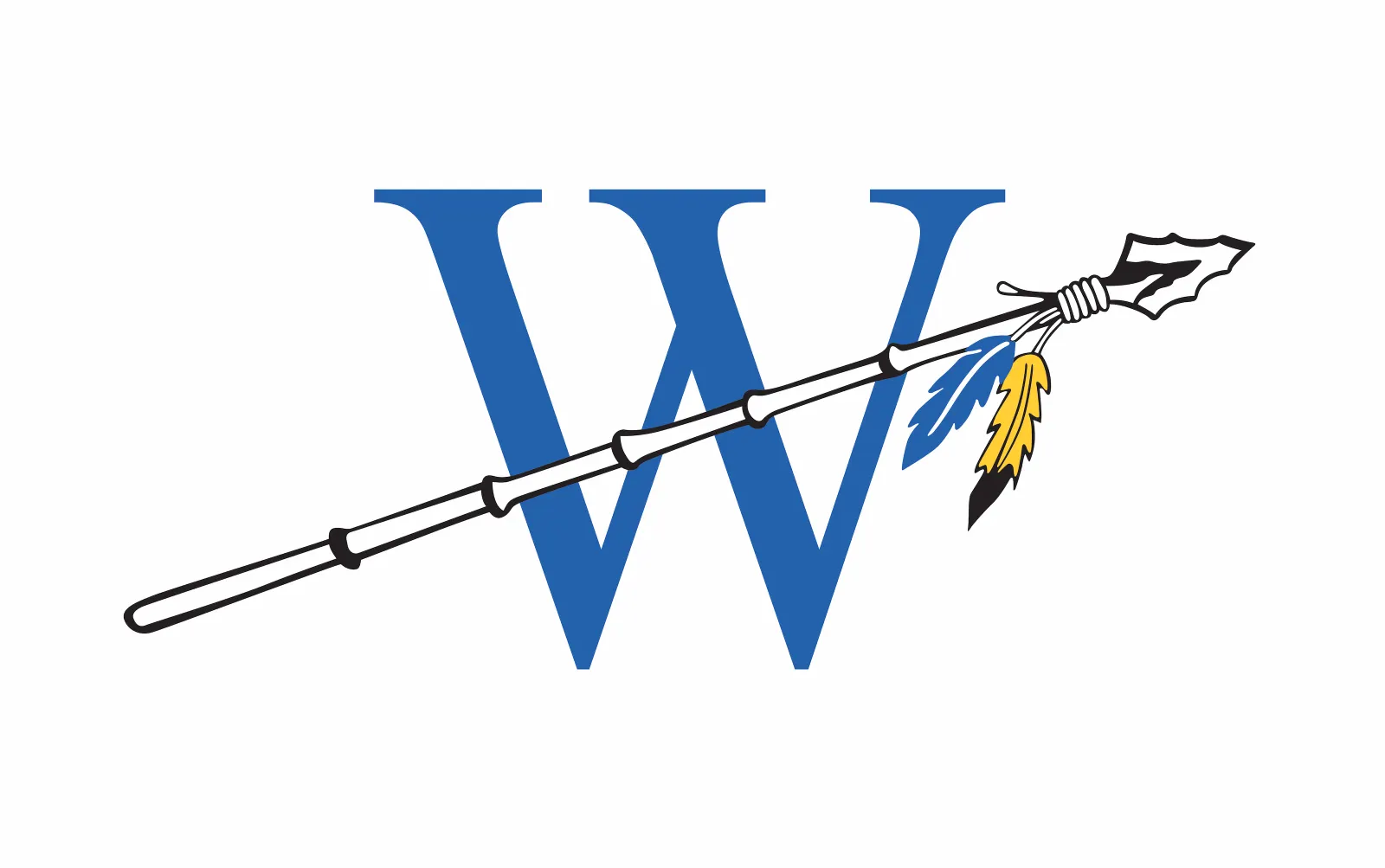
However, by the end of May, the Trump administration had found New York in violation of Title VI, which bars discrimination in federally funded programs on the basis of race, color or national origin, for banning school districts from using Native American mascots and logos. By mid-June, it had referred the case to the U.S. Department of Justice for enforcement after the state refused to sign onto the administration's proposed resolution agreement.
That rejected agreement called for overturning the state regulation banning Indigenous mascots for New York public schools, issuing a memo to all districts informing them of the change, and sending letters of apology to Indigenous tribes for discriminating against Native Americans.
“The Trump Administration will not stand idly by as state leaders attempt to eliminate the history and culture of Native American tribes,” said U.S. Secretary of Education Linda McMahon in a May 30 statement. “Rather than focus on learning outcomes, the New York Department of Education and Board of Regents has set its sights on erasing Massapequa’s history — while turning a blind eye to other districts’ mascots that are derived from or connected to other racial or ethnic groups."
In July, OCR launched a second investigation, this time into New York's Connetquot Central School District over its mascot, the "Thunderbird."
"Images like the Thunderbirds and Chiefs are seen as symbols of strength, honor, and identity — not of disrespect,” said McMahon in a July 8 statement. “The Department of Education has been clear with the state of New York: it is neither legal nor right to prohibit Native American mascots and logos while celebrating European and other cultural imagery in schools. New York’s patronizing attitude toward Native Americans must end."
That investigation is still ongoing.
The Education Department's push to revive Native American mascots and frame their bans as discriminatory is reflective of a broader effort from Trump to bring back Native American mascots even outside the K-12 sphere. The president recently threatened a municipal stadium deal if the NFL's Washington Commanders football team doesn't revert to its long-controversial "Redskins" name.
What research says
As the Education Department takes a clear side in the debate, however, some research points in the opposite direction.
Nearly two decades ago, the American Psychological Association called for an immediate recall of all American Indian mascots, symbols, images and personalities by schools, among other institutions and organizations. The group cited social science research on the negative impact of racial stereotyping, particularly through mascots, on the identity development and self-esteem of young American Indians.
"We know from the literature that oppression, covert and overt racism, and perceived racism can have serious negative consequences for the mental health of American Indian and Alaska native people," said Lisa Thomas, chairperson of the APA Committee on Ethnic Minority Affairs at the time, in a statement on the group's website. "The discontinued use of American Indian mascots is a gesture to show that this kind of racism toward and the disrespect of all people in our country and in the larger global context, will not be tolerated."
APA cited research by Stephanie Fryberg, a member of the Tulalip Tribes and a social and cultural psychologist, that suggests American Indian mascots are harmful because they are often negative, and they remind American Indians "of the limited ways in which others see them."
"This in turn restricts the number of ways American Indians can see themselves," she said. Fryberg, a professor at the University of Arizona, studies the impact of racial and cultural representations on psychological well-being, development and educational attainment.
In 2011, Fryberg testified before the Senate Committee on Indian Affairs on behalf of APA, summarizing her own research and that of others: American Indians, after exposure to mascots supposedly representing them, report reduced feelings of self-esteem and community worth, fewer achievement-related aspirations, and higher rates of anxiety and depression. By contrast European Americans, when exposed to American Indian mascots, report a boost in self-worth.
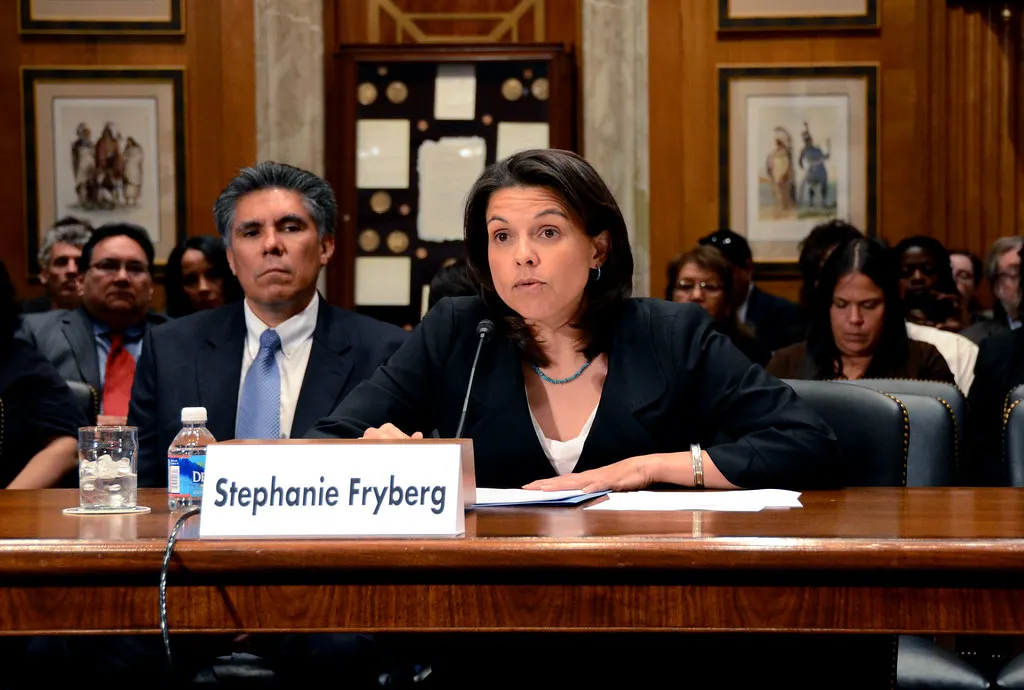
"Consistent with the stereotyping literature, American Indian mascots are one of the taken-for-granted features of everyday life that serve to foster racial and ethnic inequality in this country," Fryberg said.
The nuance
Native Americans themselves, meanwhile, are divided on the topic of mascots.
"We see it as sort of a badge of honor if people were to use American Indians as something that they respect and revere," said Mark OneWolf, an associate board member of the Native American Guardians Association.
The association, which advocates for "the respectful use" of Native American imagery in sports and education, filed the civil rights complaint that sparked the Education Department's Title VI investigation into the Massapequa School District's "Chiefs" mascot in New York.
If a district wants to honor a local tribe, OneWolf said, it's important to correctly represent that tribe. For example, OneWolf, who is an Apache, recalled a school district whose mascot was the "Apaches" but used a Plains Indian — usually from North America's Great Plains — for its imagery when Apaches are from the Southwest.
"I didn't see that as honoring Apache, if you're going to use a different culture," OneWolf said. "Just like if I say, I want to honor Chinese people, but then I have a picture of a Japanese samurai or something like that."
OneWolf said he draws the line at donning mascot costumes, including using face paint or feathers, for events like game days.
"Everything that we do has a meaning — the feathers have a meaning. The face paint has a meaning. The colors of the paint have a meaning," he said. "And so that's something that does not come through when people dress up in costume."
In Minnesota's Deer River Schools, where about a third of the students are Native American or Alaska Native, according to U.S. News & World Report, finalizing the mascot required ongoing dialogue with Native American students and families. Prior to the tribal council's approval of the mascot, school district representatives presented histories of their mascots and highlighted their efforts to ensure respectful representation, including getting input from stakeholders.
Before giving final approval, the tribal leaders examined those materials and community engagement efforts.
Yet others say Native American mascots shouldn't be used at all, or should be reserved for schools that serve a predominantly Native American population.
"These symbols perpetuate harmful stereotypes and contribute to hostile learning environments for Native students," said the National Indian Education Association in a statement to K-12 Dive.
In 2013, NIEA adopted a resolution calling for eliminating such mascots nationwide, but it supported tribal nations' and Native-led schools' rights to use cultural imagery to reflect their own traditions. The Minnesota law meant to ban Native American imagery, for example, makes an automatic exception for schools that are located on tribal reservations and whose student population is at least 95% American Indian.
"There is a meaningful distinction between Native Nations choosing to represent themselves, using imagery or names that reflect their own communities, and non-Native institutions using racist terms or stereotypes to entertain crowds," said the Native American Rights Fund. That statement came in a July response to the Education Department's New York Title VI investigation outcome, which the group called "dangerously flawed."
"The former is cultural expression. The latter is cultural mockery," the group said.
Whose decision is it?
By enforcing Title VI to favor the use of Native American mascots, the Trump administration — which has otherwise pushed for state and local control of K-12 issues — is steering a decision that many view as a local one.
"While federal engagement on this issue reflects growing awareness of its impact on Native students, we believe that meaningful change must be grounded in the voices and leadership of Native communities," said NIEA in its statement to K-12 Dive. "Political efforts to preserve or reinstate these mascots — especially without Tribal consent — run counter to that goal.”
As of April 2023, more than 21 states had acted to or were working to address the use of Native mascots in their public schools, according to law firm Lutzker & Lutzker, which provides trademark and branding law services. At the time, 1,901 schools in 966 districts still had Native themed mascots, the firm said.
These efforts also come with financial implications for districts.
In New York's 2023 guidance to districts making mascot changes to comply with the state ban, the state prompted districts to take the least costly road where possible. "For example, rather than replacing an entire artificial turf field, the center section of the field containing the prohibited team, logo, or imagery could be replaced," the state said in an FAQ. The state also offered aid to subsidize costs.
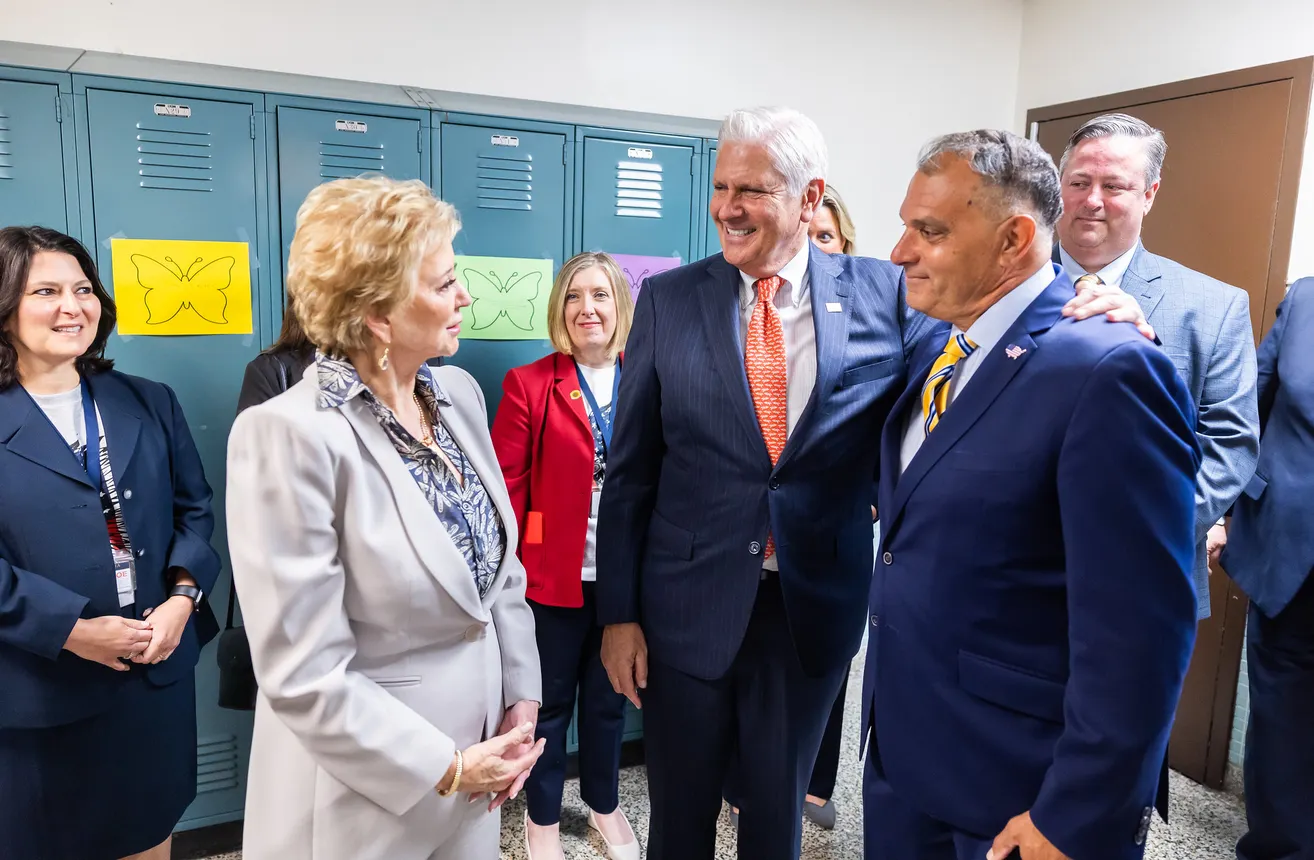
In Minnesota, overhauling Deer River's mascot under the state law — had it not applied for an exemption — would have cost the district about $300,000 to rebrand things like uniforms and other school paraphernalia.
"We're making huge budget reductions. And to say that we were gonna have to do something with our branding was kind of ridiculous," said Rendle. He believes policymakers didn't grasp the district implications of such a sweeping change, he added.
"We want to take care of our own business," said Rendle. "And sometimes these things that pop up have nothing to do with your own community and have to do with somebody else's view of what should be going on statewide or even nationally."


